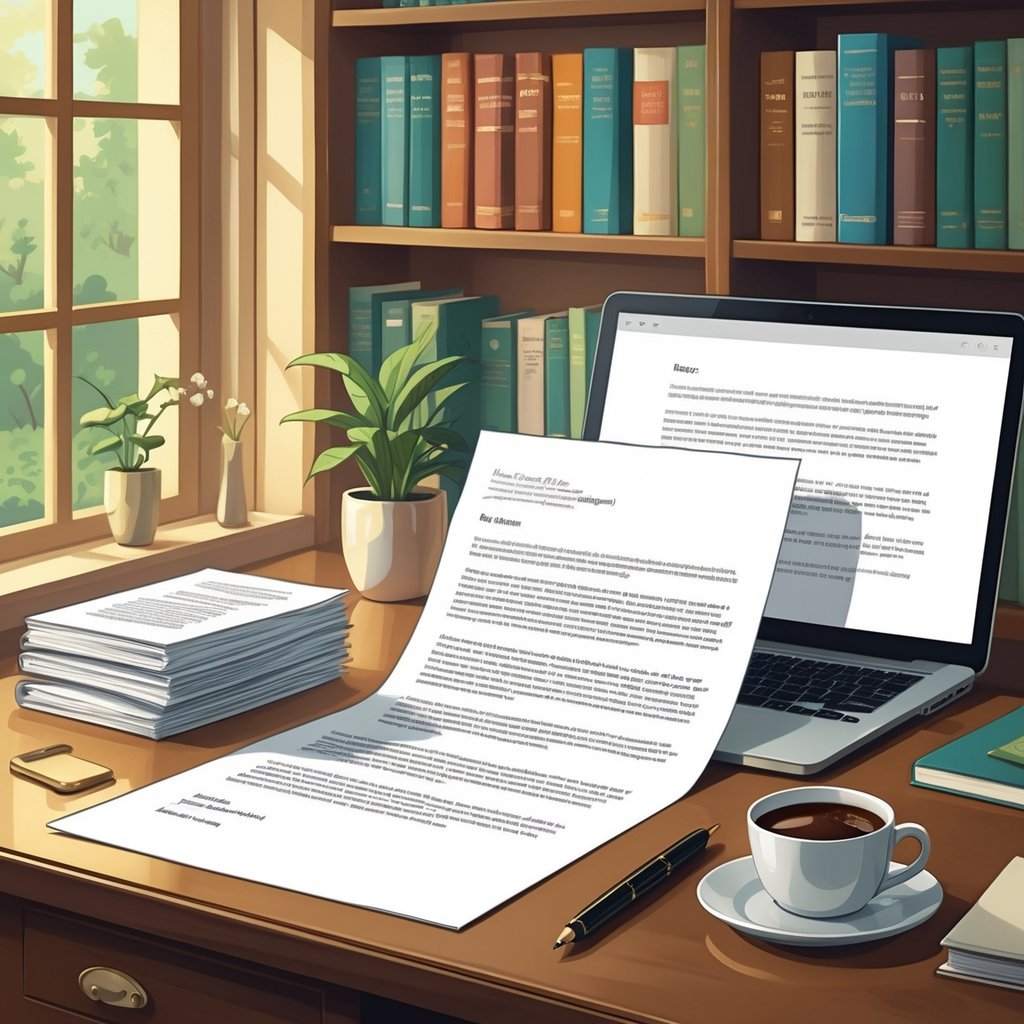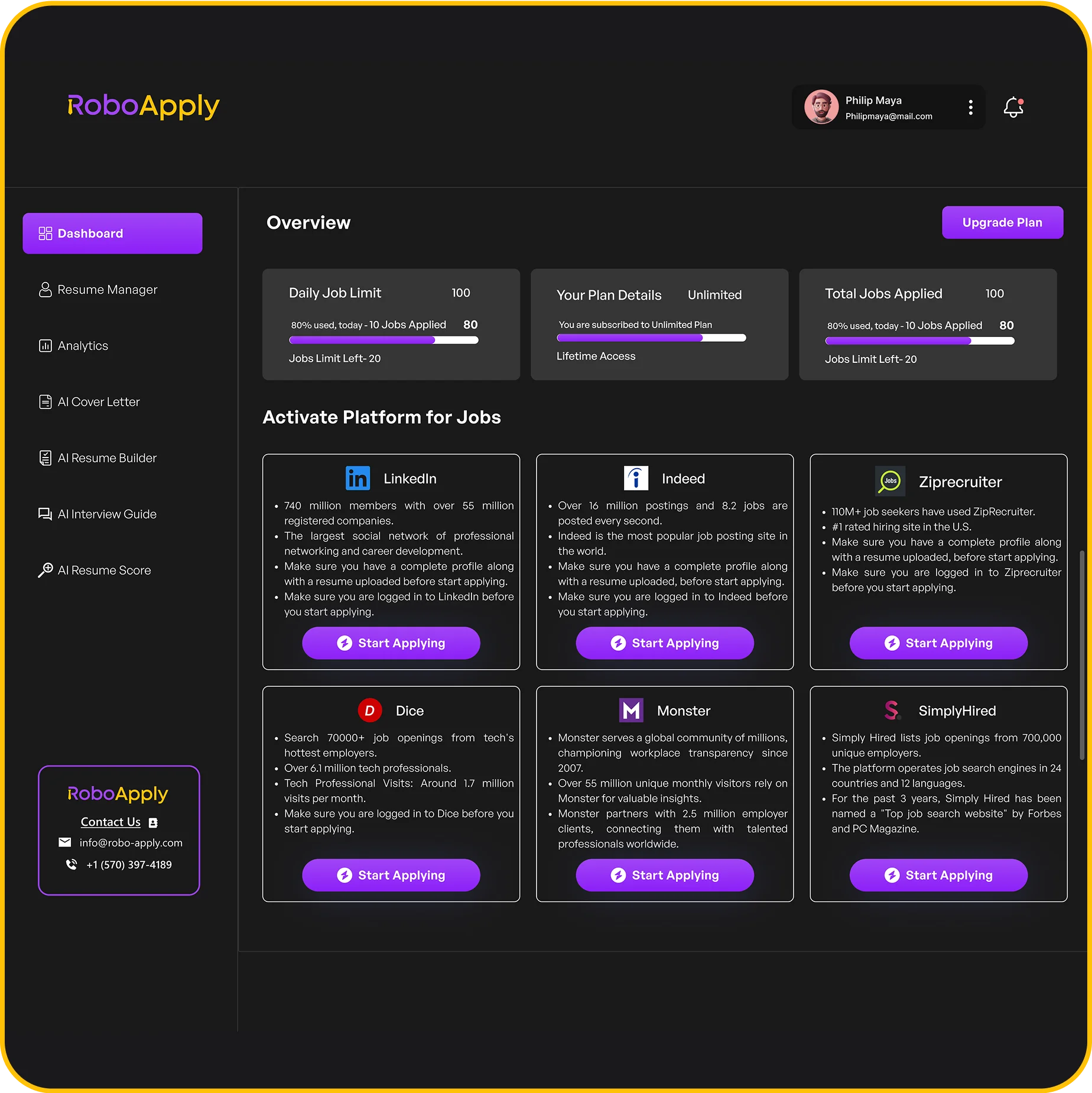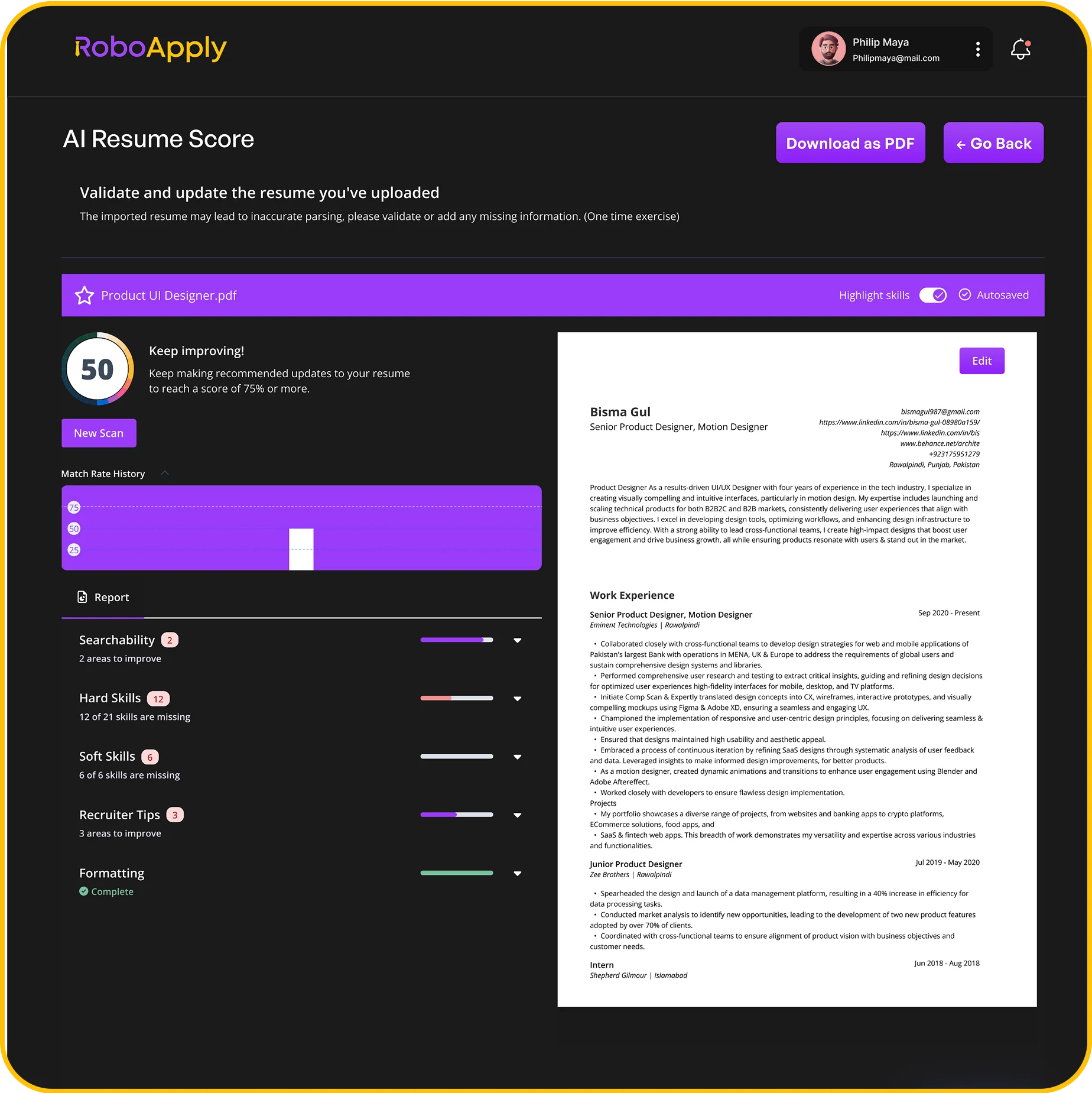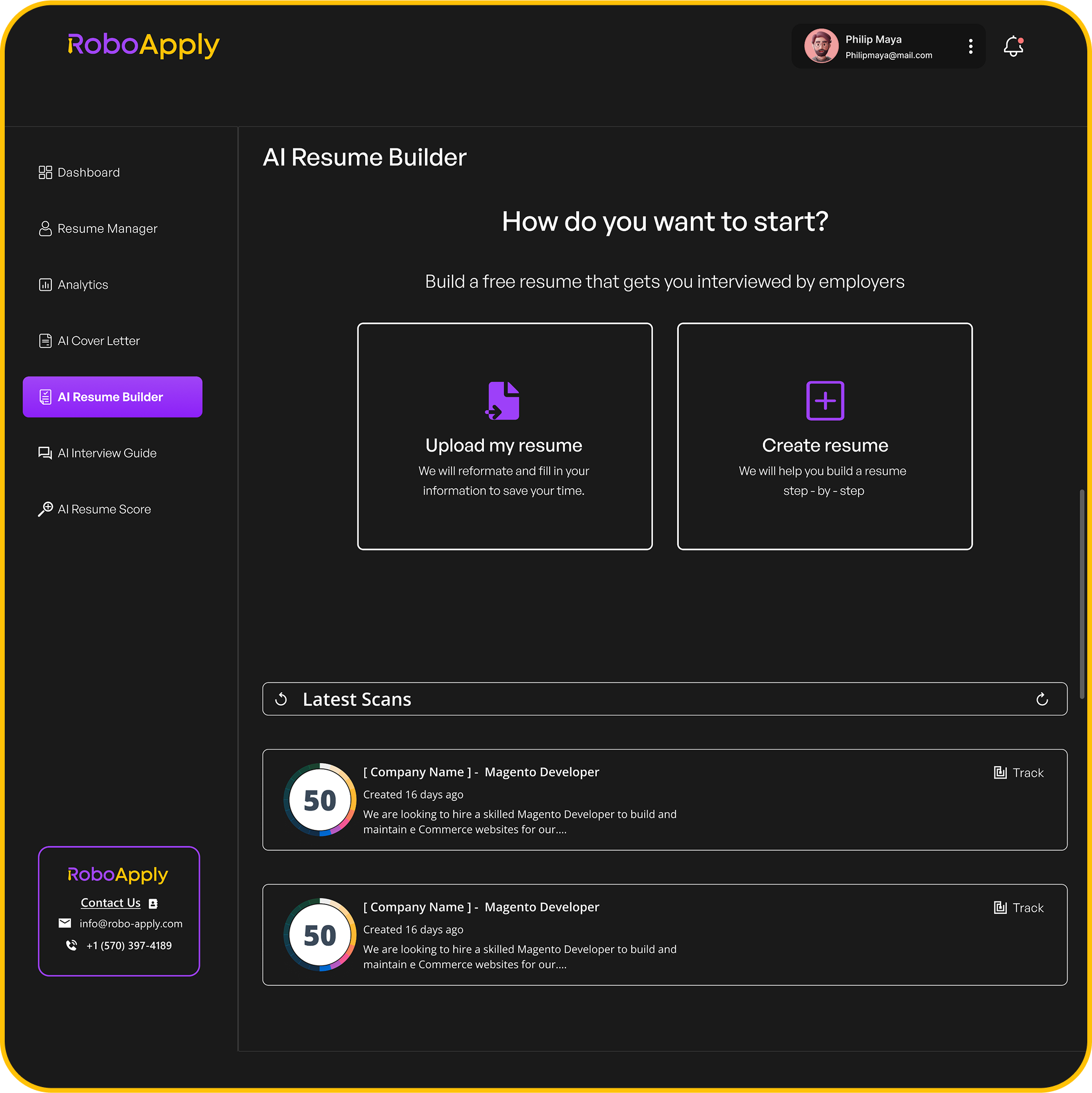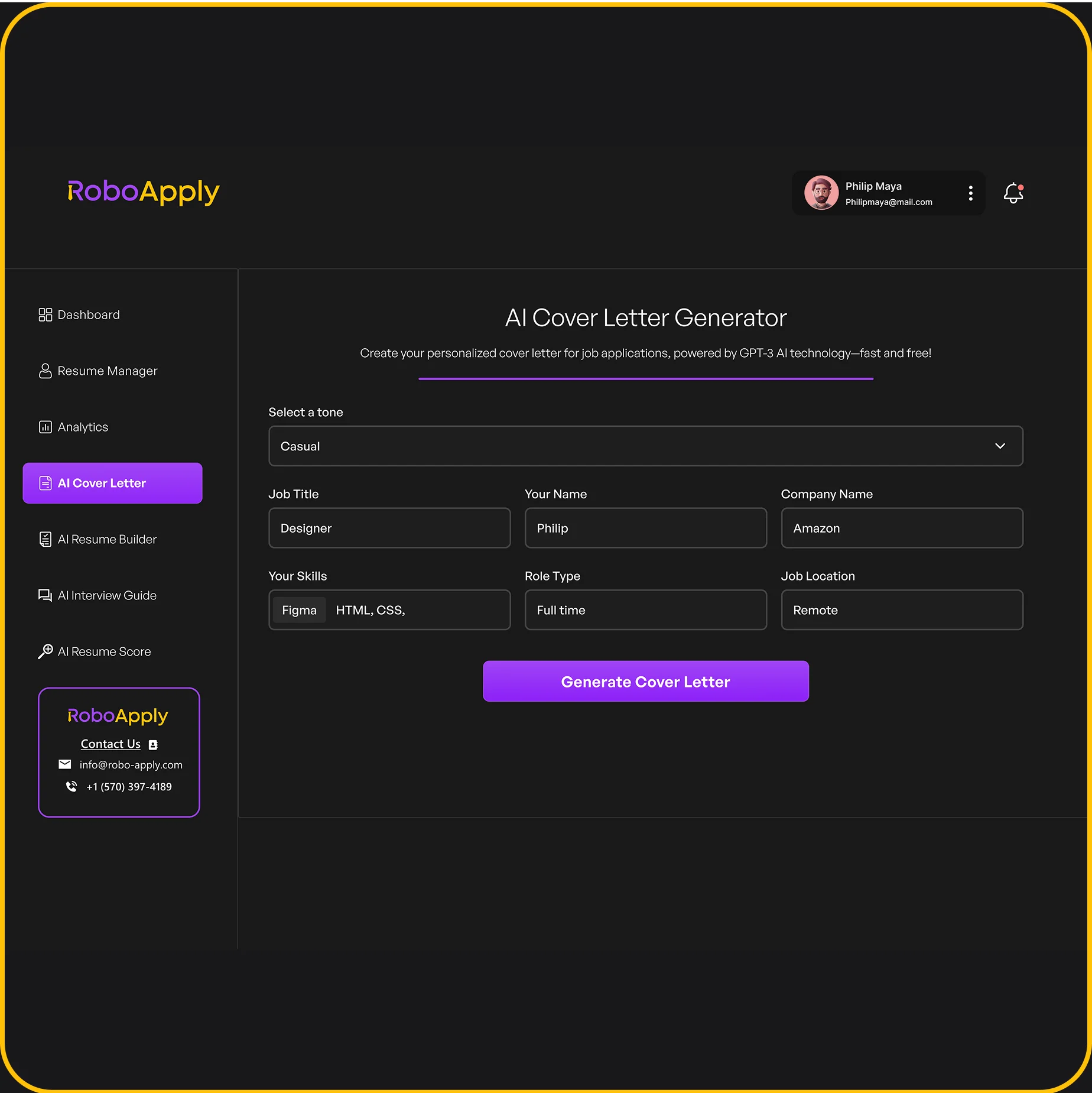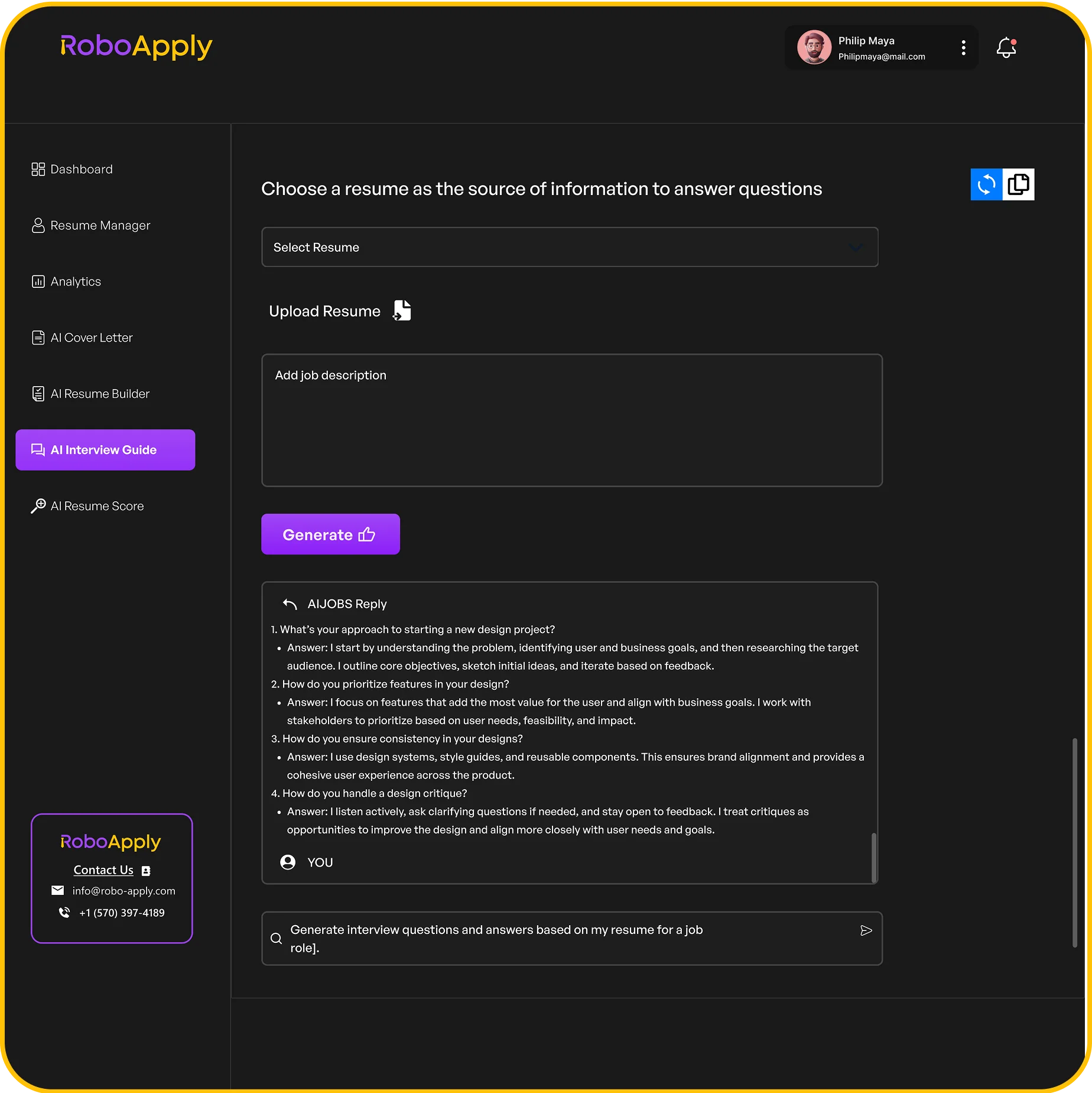Writing a cover letter for a short story submission can feel challenging, especially for new writers. Editors often see hundreds of cover letters, so it is important to make yours clear and professional right from the start.
A proper short story cover letter introduces the story, states the word count, any relevant publication history, and keeps it short and to the point.

Writers should focus on giving essential information only. Editors care about details like the story’s title, genre, and length, along with a brief note about the author if relevant.
Keeping cover letters simple is preferred by many editors who have limited time to review submissions. Knowing how to structure a short story cover letter helps writers present their work in the best light.
With just a few lines, a well-written letter can help a writer seem professional and respectful of the editor’s time. This encourages editors to read the submitted story.
Understanding the Role of a Short Story Cover Letter
A cover letter introduces a short story to an editor and explains key details about the submission. It sets a professional tone and helps editors quickly understand who the writer is and what the story offers.
Purpose in the Submission Process
A cover letter’s main job is to provide essential facts before the editor reads the short story. It usually includes the story title, word count, genre if needed, and sometimes previous writing credits or awards.
This helps the editor know what to expect and gives them context about the writer’s background. Short story markets may get many submissions, so a concise cover letter can help a writer stand out for the right reasons.
Editors prefer clear, brief introductions that avoid extra details or summaries. Instead of repeating what is in the story, the cover letter states facts the editor needs to know to make an initial decision.
Business Letter Format
Short story cover letters generally follow a business letter format even when sent by email. This includes a polite greeting, a brief body, and a closing.
The writer addresses the editor by name if possible and keeps the overall message professional and neat. Structure of a short story cover letter:
- Greeting (such as “Dear Editor” or the editor’s name)
- Key story information (title, word count, genre, publication credits)
- Closing line (example: “Thank you for considering my work.”)
- Name and contact details
Sticking to a business letter format shows respect for the editor’s time. Most editors want cover letters to be as short as possible, sometimes with a strict character limit, so every sentence should count.
Distinguishing Cover Letters from Query Letters
Cover letters and query letters serve different roles in publishing. A short story cover letter is brief and meant for finished works that are ready for submission.
It gives facts about the story and the writer but does not explain or pitch the story in depth. A query letter is common when the writer wants to pitch a book or a story idea before submitting the full manuscript.
It might include a summary or a “hook” to attract the editor’s interest. By contrast, when sending a short story, the cover letter skips summaries or teasers.
This distinction matters because most short story editors, especially for magazines and anthologies, want the story to speak for itself. They do not expect writers to summarize or sell the story in the cover letter.
Instead, a good short story cover letter sticks to basic facts, letting the writing take center stage.
Researching Publishers and Their Submission Guidelines
Writers need to understand where their short story fits and follow publisher expectations. Learning about submission rules and contact details helps increase the chance of a positive response.
Finding the Right Publisher or Magazine
The first step is to match the story to a suitable publication. Consider the genre, tone, and word count.
Literary magazines often list their requirements on their submission pages, so check those pages early in your research. Use lists and databases, such as Duotrope or the Poets & Writers database, to find open calls and specific details.
Browse recent issues or website archives to see if your work fits with what the publisher is looking for. Ask other writers or read advice articles from editors to get recommendations.
Keeping a spreadsheet or table with publisher names, genres, payment, and deadlines can help stay organized:
| Publisher | Genre | Deadline | Payment |
|---|---|---|---|
| Example Lit Mag | Fantasy | June 1 | $50/story |
| Another Review | Literary | July 15 | $20/page |
Analyzing Submission Guidelines
Reading and following submission guidelines is essential. Publishers and literary magazines post specific instructions on their websites, including format, word count limit, and how to address the editor.
Always check for unique requirements to avoid having your submission rejected unread. Some guidelines will mention if your story should be in a certain file format, such as .docx or .pdf.
Others may state if they accept simultaneous submissions or reprints. If the magazine requests a cover letter, they might ask for details like story title, genre, and a short author bio, as explained by experts.
Reading carefully and double-checking before submitting saves time and prevents mistakes.
Identifying Editors and Contact Details
A cover letter is more effective if addressed to the right person. Many magazines list the editor’s name and contact information on their websites, often under an “About” or “Masthead” page.
Look for the fiction editor or submissions editor, not just a generic address or title. If the editor’s name is missing, consider looking at past issues or searching for recent staff announcements.
Sometimes, submission guidelines will include exact contact information, such as an email or submission form link. Use this information as directed, and always spell the editor’s name correctly to show attention to detail.
This helps build a professional impression with the publisher.
Structuring Your Short Story Cover Letter
A short story cover letter should be brief, professional, and well-organized. Every element should serve a clear purpose, from starting with a respectful greeting to sharing key story details and making contact information easy to find.
Crafting the Salutation
The cover letter should start with a simple and polite salutation. If the names of the editors or staff are known from the magazine or journal’s website, writers should address it directly, such as “Dear Editor” or use the editor’s full name.
Avoid generic greetings like “To Whom It May Concern” unless no editor exists by name. Addressing an editor directly shows that the writer has researched the publication.
This small effort leaves a positive first impression. If the submission guidelines use specific titles, writers should use those titles in the salutation.
Writers should also keep the language formal and avoid using first names, unless the guidelines or publication is informal. Opening with the right greeting starts the cover letter on a respectful and professional note.
This helps set the tone for the rest of the letter, and editors will appreciate the attention to detail.
Presenting Your Story’s Title and Genre
Quality cover letters clearly state the story’s title and genre in the opening paragraph. They may also include the story’s word count and, if relevant, indicate the piece’s theme.
For example: I am submitting my short story “Mark of the River,” a 3,200-word piece of science fiction, for your consideration. This information helps the editor quickly identify the submission and decide who should review it.
Including the word count is important because many publications and magazines have strict limits. If the writer has published work or received relevant awards, a short sentence about these credits is helpful, but not required.
Always stick to facts and avoid exaggeration. If the story is previously unpublished, most editors expect the cover letter to state this clearly.
Writers can look at guides such as Neil Clarke’s explanation of cover letter structure for more specific tips. Details matter, so writers should double-check titles, genres, and statistics before sending.
Providing Your Contact Information
The last part of the cover letter should list accurate contact information. Writers should include their full name, email address, and sometimes a physical address or phone number, based on the submission guideline requirements.
This section is usually placed at the top or bottom of the cover letter. If submitting by email, the usual practice is to include these details after the writer’s signature.
In online forms, editors may already have this information, but adding it in the letter is still good practice, as recommended by writingclasses.com.
Contact details help editors reach out quickly for questions, acceptances, or edits. Double-check every item for typos before submitting.
Clear contact information prevents confusion and speeds up responses from editors or staff. Writers should keep this section simple and avoid adding links to unrelated websites or personal blogs unless the publication requests them.
What to Include in a Short Story Cover Letter
A strong short story cover letter is clear and direct. It quickly tells the editor what they need to know about the author, the submission, and the author’s experience.
Brief Author Bio
A brief author bio introduces the writer in one or two sentences. It should include the author’s name and any relevant background, such as education, profession, or interests linked to writing.
Editors are not looking for a full resume. Instead, mention details that connect to writing, such as if the author has studied creative writing, worked as a journalist, or has published essays.
The goal is to show the editor the writer’s perspective or experience. It is common to keep the bio simple and straightforward.
For example: “Jane Doe is a high school teacher from Texas who writes short fiction.” The bio should appear after the opening lines of the cover letter.
Previous Publications or Credentials
Listing previous publications or credentials helps an editor see the writer’s experience. If the author has published stories, poems, or essays in other magazines, these should be included.
Writers should only mention notable or relevant publications. If the writer is unpublished, it is fine to say so or skip this part.
Editors do not expect every submission to come from a published writer. A short list is best.
Avoid long lists or including unrelated accomplishments. When sharing credentials, keep formatting clear and professional.
For example: “Her work has appeared in The Atlantic, Clarkesworld, and Strange Horizons.” For more advice, see tips about listing credentials from Neil Clarke.
Simultaneous Submission Statements
Many editors want to know if a short story is a simultaneous submission, meaning it has been sent to more than one publication at the same time. Authors should check each magazine’s guidelines and state clearly if the story is under consideration elsewhere.
Adding a simple line is enough: “This story is a simultaneous submission.” If a magazine does not allow simultaneous submissions, writers should not send their work to other places.
It is best to include this statement at the end of the cover letter. For more details, visit advice about simultaneous submissions.
Common Mistakes to Avoid
Writers hurt their chances by missing key details in their cover letters. Simple mistakes with guidelines, tone, or story details can lead to faster rejections and missed opportunities.
Ignoring Guidelines
Many editors provide clear submission guidelines for cover letters. Ignoring these rules signals a lack of attention and respect.
For example, some guidelines list a word count, details to include, or the preferred file format. Writers should always check for updates to these requirements.
Some publications even ask for specific things to be mentioned or left out. Submitting without double-checking these details can result in the story being rejected without review.
It is helpful to keep a checklist of each publication’s cover letter requirements. This makes it easier to avoid forgetting a step or including unwanted information.
Submitting a story properly starts with careful reading of submission guidelines.
Overly Detailed Story Summaries
A common mistake is including long, detailed summaries of the story in the cover letter. Editors are not looking for a synopsis or plot breakdown at this stage.
A cover letter should mention the title, genre, word count, and sometimes a short line about the story’s theme or idea. It should not explain every twist or character.
Editors want to read the story itself, not learn every plot point before starting. Keeping the summary brief shows respect for their time and experience.
Instead, save longer explanations for when an editor specifically asks for them.
Unprofessional Tone or Errors
A cover letter is a business document. Using slang, jokes, or informal greetings can look unprofessional to editors.
Writing errors like misspelled words, poor grammar, or typos can make even a strong story stand out for the wrong reasons. Writers should proofread their letters and avoid unnecessary details about their personal lives or unrelated accomplishments.
Use a simple greeting such as “Dear Editor” if unsure who will be reading. According to carvezine.com, including only relevant information is more effective.
Using a clear, respectful tone helps the author come across as serious and easy to work with. This increases the chances that the story will be read with care.
Submission Methods for Short Story Cover Letters
Writers can send cover letters and short stories by both digital and physical mail. Each submission method has its own guidelines, important details, and steps that must be followed.
Submitting via Email
When submitting a short story and cover letter by email, writers should pay close attention to the submission guidelines of the magazine or publisher. Usually, the cover letter goes in the body of the email, while the story is attached as a document or pasted below the letter as required.
Key details to include in the cover letter:
- Title and word count of the story
- Genre, if requested
- Short bio or relevant publication credits
- Statement that the story is being submitted for consideration
It’s important to use a simple, professional subject line like “Short Story Submission: [Title] by [Author Name].” Attachments should be in the format requested, such as .doc or .pdf.
Editors prefer short and direct cover letters. More tips on what to include can be found in this guide on how to write a short story cover letter.
Before sending, double-check that the story follows formatting guidelines. Always use the correct email address provided in the publication’s submission section.
Keep messages brief and avoid unnecessary details.
Snail Mail Procedures
For snail mail submissions, writers need to print both their cover letter and story. Most publishers ask that the cover letter be placed on top, followed by the story, each printed on standard white paper with one-inch margins.
All pages should be clean and neatly stacked, not stapled. A snail mail submission packet commonly includes:
| Item | Details |
|---|---|
| Cover Letter | On separate page, signed if possible |
| Printed Story Manuscript | Double-spaced, with contact info on first page |
| Self-Addressed Stamped Envelope (SASE) | For response or return of material |
A clear return address is important, both on the envelope and inside the letter. Writers should use a sturdy envelope that can fit the full manuscript flat.
Some places also request a brief bio included with the cover letter. Checking current guidelines is important, as some magazines no longer accept physical submissions.
For more process tips, visit how to send out submissions in a cover letter.
Improving Your Cover Letter Through Feedback and Community
Writers can make their cover letters better by sharing them with others and being open to suggestions. Community support, honest feedback, and the guidance of professional groups can help a writer avoid mistakes and improve their chances.
Workshopping Your Cover Letter
Many writers benefit from participating in a workshop setting when creating a cover letter. In a workshop, a group may meet in person or online to review each other’s writing.
When sharing a draft, writers should state what kind of feedback they need. For example, they might want help with tone, clarity, or professionalism.
Writers should look for writing workshops that welcome both new and experienced members. They can listen as others read their letters aloud or provide written suggestions.
Sharing in a group helps point out unclear sentences or mistakes that the writer may have missed. Writers should be open to receiving both positive and constructive feedback.
They should take notes and apply suggestions that are clear and relevant. Workshops often give writers confidence by showing them which parts of their letter are strong.
Seeking Feedback from Peers
Peer feedback is important because writers can learn from people who are at a similar stage in their careers. Sharing cover letters with trusted friends or fellow writers helps catch language that feels awkward or unprofessional.
Writers can ask peers to answer specific questions, such as:
- Does the letter introduce the story clearly?
- Is the author’s background relevant and concise?
- Are there any typos or grammar problems?
It is helpful to swap cover letters and discuss feedback in person or by video chat. This makes it easier to ask follow-up questions.
Writers should thank their peers and offer to review their work in return, building a supportive network.
Utilizing SCBWI and Other Writing Organizations
Many organizations, like the Society of Children’s Book Writers and Illustrators (SCBWI), offer resources for getting feedback on cover letters. Members can access critique groups, online forums, and special workshops focused on submission materials.
Writers can use SCBWI’s local chapters to join workshops or webinars. These events often include tips from industry professionals who review real cover letter examples.
Some organizations also provide feedback circles and peer review exchanges. Participating in groups like SCBWI gives writers access to new ideas and professional standards.
They also stay updated with best practices and editor preferences. Taking part in these groups helps writers improve quickly and write more confident and polished cover letters.
Next Steps After Sending Your Cover Letter
Writers should stay organized, respond wisely to feedback, and keep in touch with publishing professionals. Each part of the process plays a role in reaching publication and building relationships.
Tracking Submissions
It is important to keep a record of all stories sent to agents and editors. Writers can use a notebook, spreadsheet, or digital tool to list each story, where it was sent, the date, and any response received.
A simple table can help:
| Story Title | Market/Editor | Date Sent | Response | Notes |
|---|---|---|---|---|
| “Story One” | Dream Magazine | 5/1/2025 | Pending | First Choice |
| “Story Two” | Best Lit Mag | 4/15/2025 | Rejected | Personal Note |
This system helps avoid submitting the same story to the same place twice and tracks how long each submission has been waiting. Writers should update it as soon as they hear back or send a new query.
Using such tracking keeps the process organized and saves time.
Handling Rejections and Acceptance
Rejections are a normal part of submitting stories. Writers should read any notes from editors carefully.
If the rejection is a form letter, it usually does not give much information. If it is personal and includes feedback, consider revising the story before submitting it elsewhere.
When an acceptance arrives, writers should read the contract fully before agreeing. They may want to ask questions if anything is unclear, especially about finance like payment rates, rights, and timeline.
Respond by thanking the editor by name if possible. Do not stop submitting to other places until a deal is confirmed in writing.
Keeping calm and polite in all replies, both to rejections and acceptances, will help build a good reputation in the publishing community. Learn more about short story cover letters and rejections at this short story cover letter guide.
Engaging with Editors and Agents
After sending a cover letter, writers may get questions from editors or agents. Reply as soon as possible, using a clear and respectful tone.
Address the person by their name, if provided, to make the message personal and professional. If an agent or editor asks about other projects, give a short description, but do not overload the reply.
Only share extra materials if requested. If you are querying your dream agent, follow their listed guidelines exactly.
Occasionally, editors or agents may invite resubmissions after revisions. Writers should follow instructions carefully and thank them for the chance.
Staying polite, responsive, and following up professionally keeps the door open for future opportunities and positive relationships. Get more tips from this cover letter advice for short fiction submissions.
Frequently Asked Questions
A short story cover letter should be brief, clear, and professional. Writers often wonder about what to include, the right format, potential mistakes, and its true impact on their submissions.
What elements should be included in a short story cover letter?
A good short story cover letter includes the story title, word count, and genre if needed. The writer should add their contact details and a short, relevant bio.
It is helpful to mention if the work is a simultaneous submission. Keeping it short is important, as detailed here.
Can you provide an example of a cover letter for a short story submission to a literary magazine?
Here is a sample:
Dear Editor,
Please consider my story “Winter Night” (2,500 words), which is a work of realistic fiction, for publication in your magazine. I have previously published stories in Example Journal and Fiction Weekly.
Thank you for your time and consideration.
Sincerely,
Jane Doe
How do I write a compelling cover letter for a short story without much publishing experience?
Writers without prior publication can keep their cover letter straightforward. They should focus on presenting the story and showing respect for the editor’s time.
It’s fine to write a simple letter that just offers the story for consideration and thanks the editor.
What are the best practices for formatting a short story cover letter?
Cover letters should be single-spaced and use a simple, readable font. Each section—greeting, body, closing—should be separated by a blank line.
The letter should be short, usually no longer than a few paragraphs. If sending by email, put the cover letter in the body of the email.
How important is the cover letter in the process of short story submission?
The cover letter is less important than the story itself. Editors mainly want to know the story’s title, length, and a brief note about the author.
A simple, correct cover letter is enough; most editors focus on the story, not the letter.
Are there any common mistakes to avoid when drafting a cover letter for my short story?
Common mistakes include making the letter too long or adding too much personal information. Listing unrelated accomplishments should also be avoided.
Writers should not give away the story’s plot. Spelling errors and incorrect names leave a poor impression.
